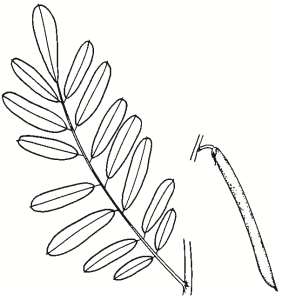Family:
Fabaceae
Indigofera australis
Austral Indigo
Other Names:

Name Origin:
Indigofera — neo-Latin for indigo-bearing.
australis — Latin for southern.
Regional Subspecies:
Indigofera australis subsp. australis
Occurrence:
Regional:
Widespread. Noted in most areas across region.
Australia:
Mainland except for NT.
Habitat:
Woodland and eucalypt forest. Commonly hilly areas.
Habit:
Open erect spreading shrub to 2.5 m high. Long slender stiff stems.
Site Preference:
Poor, shallow soil in semi or dappled shade. Tolerates moderately heavy frost and extended wet periods. Adapts to most well-drained acidic soils.
Characteristics:
Palatable, nutritious legume, grazed severely by livestock.
Flowering:
Mauve to purple (sometimes white), winter-spring. Pea-like.
Seed Collection:
Mid Nov to early Feb. Monitor closely as seeds shed immediately or very soon after maturity. Ensure collection by securing nylon stockings or paper bags to fruiting branches after flowering.
Propagation:
From scarified seed or cuttings. Pour boiling or very hot water over seeds and soak until water cools. Dry to prevent rotting and sow. Germination takes 3-4 weeks. Suitable for direct seeding in pots (2-3 seeds per pot).
Regeneration:
From seed, particularly after fire. Establishes readily when direct seeded.
VALUES:
Shade & Shelter:
Useful low-level cover in windbreaks.
Land Protection:
Legume — improves soil fertility by ‘fixing’ nitrogen.
Wildlife:
Excellent habitat. Flowers are a pollen and nectar source for many native insects, including bees and wasps. Also food for butterfly caterpillars.
First Nations:
Roots hammered and placed in salt or fresh water to poison fish.
Ornamental:
Attractive ornamental, particularly when flowering. Plant in groups for best effect. Tip prune from when young to promote bushiness and prevent straggliness. Cut dead or straggly branches at base. Coppices.
Other:
Leaves and stems produce yellow-fawn dye with alum as mordant.
